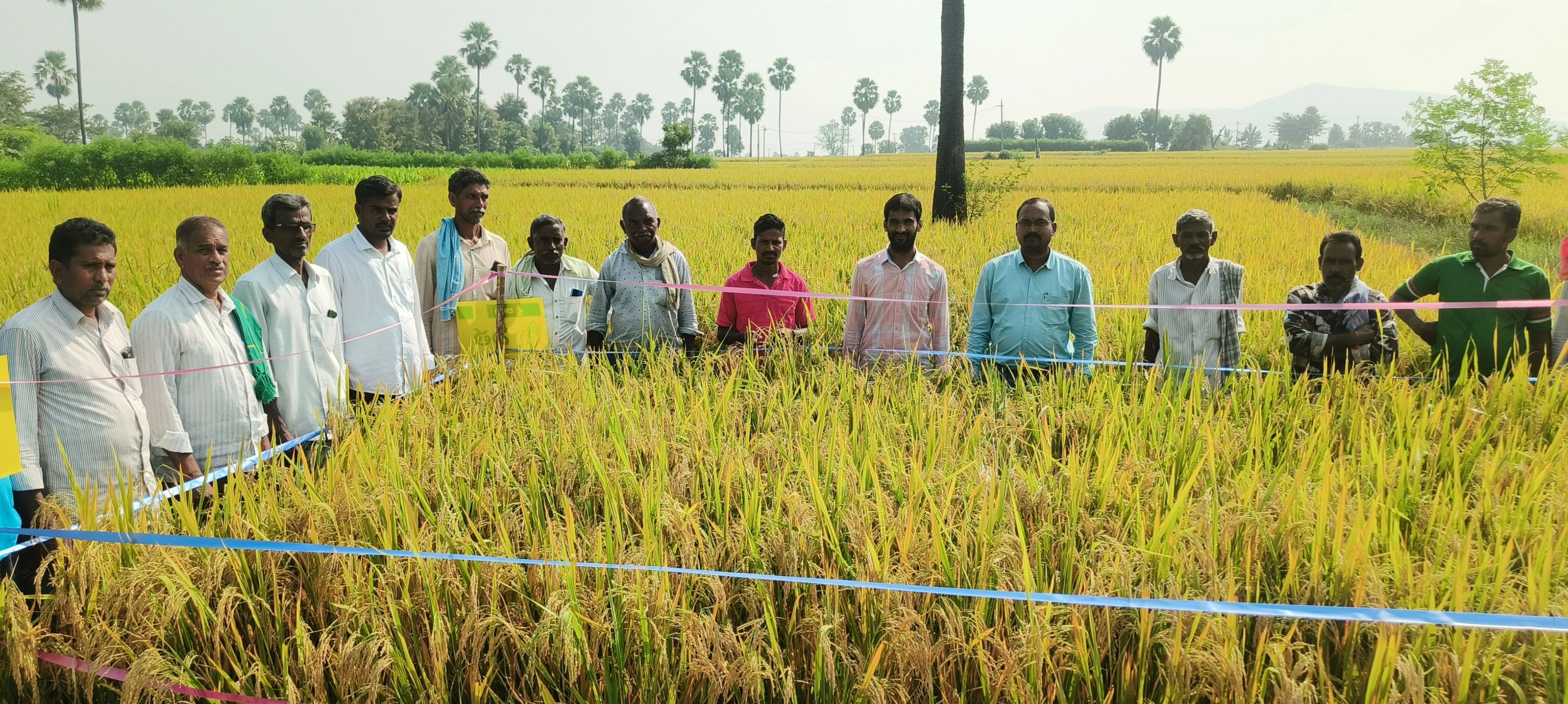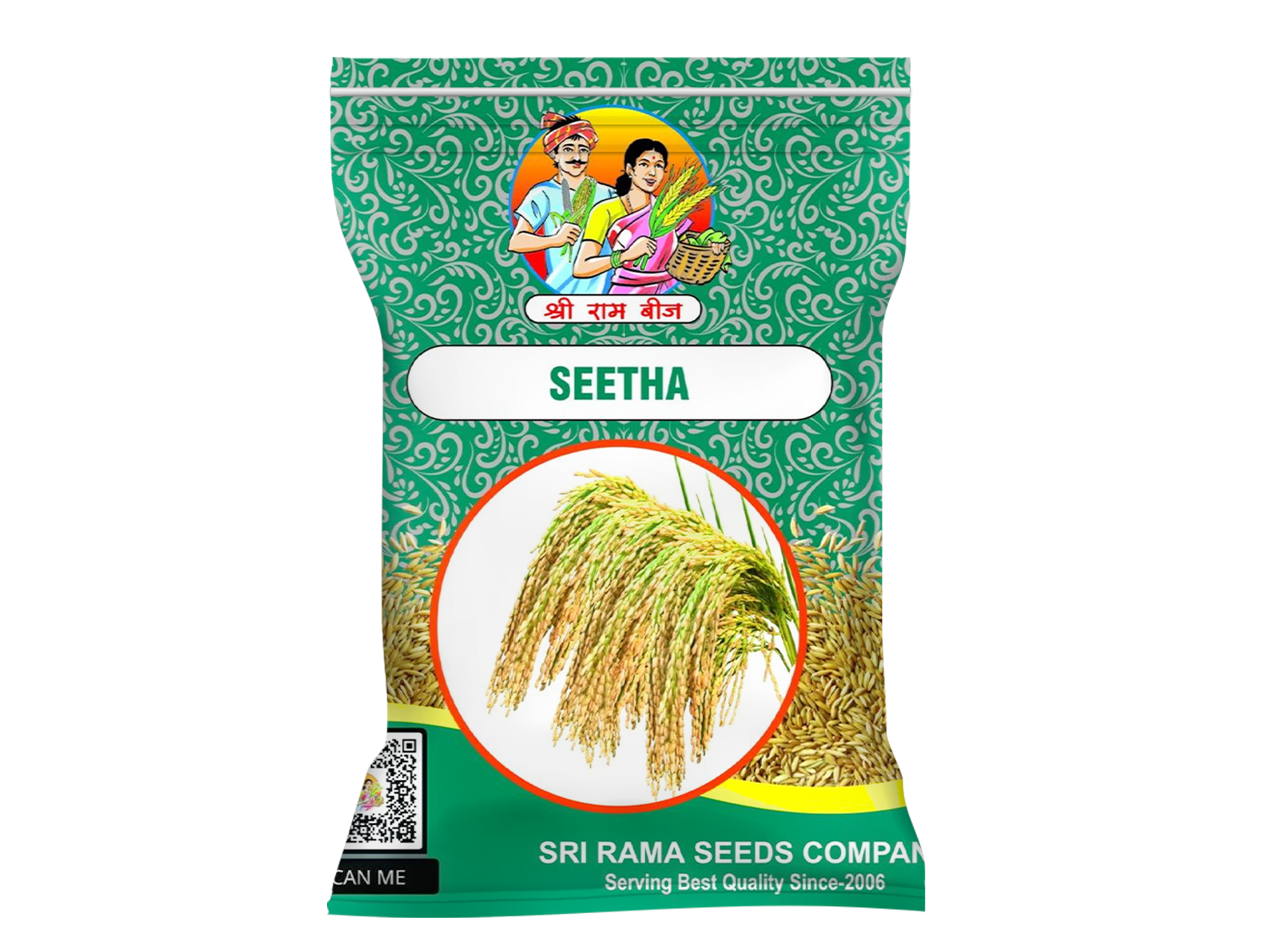Superior-Quality Paddy Variety with Excellent Cooking Taste
SEETHA is a premium short slender, super fine grain paddy
variety known for its delicious cooking quality and high
disease resistance. Designed for the Kharif season, this
variety is non-lodging, making it a reliable and profitable
choice for farmers seeking both quality and high yield.
Challenges & Solutions
Farmers often struggle with lodging issues, disease outbreaks, and grain quality
concerns. SEETHA offers effective solutions to ensure a healthy crop and superior market
value.
Challenges
-
Lodging reduces yield and grain quality.
-
Susceptibility to common paddy diseases.
-
Inconsistent grain texture and cooking quality.
-
Unstable performance in varying climatic conditions.
Solutions
SEETHA provides farmers with the following benefits:
-
Non-Lodging Variety.
-
Highly Disease Resistant.
-
Short Slender, Super Fine Grain.
-
Well-suited for Kharif season farming.
Performance and Profitability
Yield Potential (Kg/Ha):
SEETHA offers a high yield per hectare, ensuring better profitability for farmers.
Adoption Rate:
This variety is widely accepted due to its delicious cooking quality and resilience.
Farm Profitability:
The high demand for super fine grains increases its market value, leading to higher
farmer earnings.
Market Demand:
SEETHA's soft, aromatic grains make it a preferred choice among rice consumers and
buyers.









